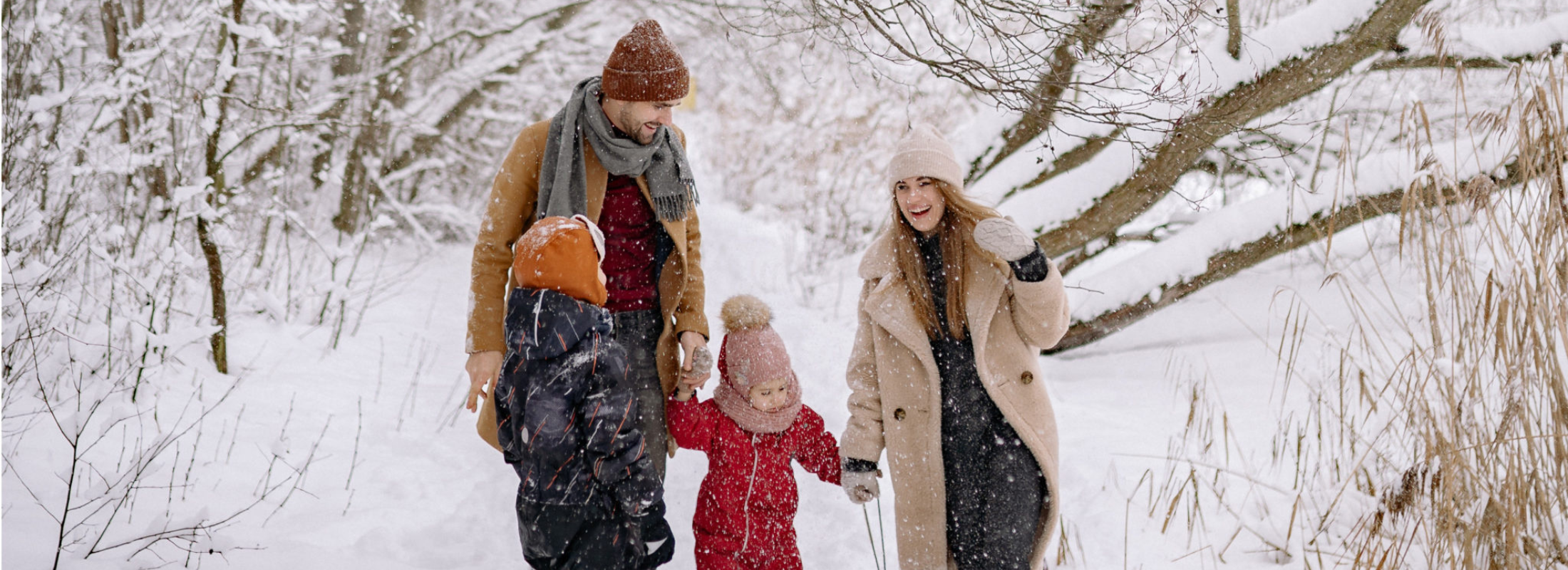
Table of Contents
According to the CDC, slips and falls on ice and snow injure 1 million Americans every year. With proper preparation, you can keep you and your family safe from preventable injuries by wearing the right clothing, shoes, and moving deliberately, slowly, and carefully.
What To Wear
Shoes That Protect Against Slips And Falls
The expression “don’t skimp on anything that comes between you and the ground” commonly refers to shoes, mattresses, and car tires. This time is no different, and shoes are the deciding factor when protecting yourself from slips and falls. Closed toe boots with a tread are the best option, and in solid ice conditions, you can enhance your shoe’s traction by adding tread using accessories like micro-spikes. You can often attach these micro-spikes to your boots using a stretchy rubber material that you pull onto them. These are invaluable, as they puncture the ice to give you better grip, like chains on car tires.
Do not wear shoes with flat or foam soles, such as sneakers, slip-ons, high heels, or sandals. These shoes do not have adequate grip in snow and ice, and may cause your feet to slip out from underneath you.
Dressing Appropriately
Layering is an art to be learned and is well worth it. It’s too difficult to move carefully in the cold weather if you’re shivering or tense. If you plan to be outside in icy or snowy conditions for more than 10 minutes, wool socks are highly recommended. Cotton socks absorb sweat and water which will make your feet cold. Wool has properties that keep it warm even when exposed to sweat and water, which makes it a better option for being in the cold for extended periods of time. Never go for a winter walk or hike in cotton socks.
Moving Carefully To Avoid Slips And Falls
Look for patches of ice when walking around and be sure to avoid them. Ice can be invisible on many different surfaces, so don’t let it catch you off-guard. It’s imperative to move slowly and deliberately on ice. Never put your heel down first but more of your whole foot to maximize surface area and stability. When walking, keep your shins as vertical as possible keeping your weight over your mid-foot. If a handrail is available to you, use it as much as you need. Do not overexert yourself in these conditions, as it can be extra dangerous and hard to be self-aware.
If you are carrying items, put them in a backpack that you can keep close to your body. A tote bag or messenger bag may put you off balance or swing in an unwieldy way. Keep your hands free so you can brace yourself in case you slip. If you do fall, try to stay loose instead of tensing up. Wearing thick gloves, scarf, and a hat can help pad slips and falls, as well as a long jacket and extra layers.
If you fall, count to 60 seconds to assess any pain or aches you may have sustained. If you hit your head, don’t hesitate call 911 if you suspect a concussion or other major injury. When standing up, remember to keep your weight over your mid-foot, and stand up slowly maybe with the help of something or someone nearby. If you sustain any minor injuries such as bruises or fractures, you can visit our Urgent Care Center for injury treatment and X-rays 7 days a week, without an appointment. Just walk in to be seen and we will get you on your feet again.
© Excel Urgent Care and Affiliates 2023

